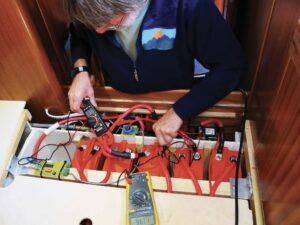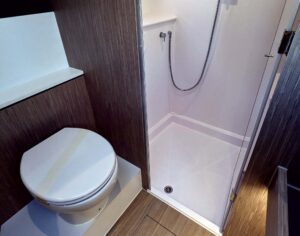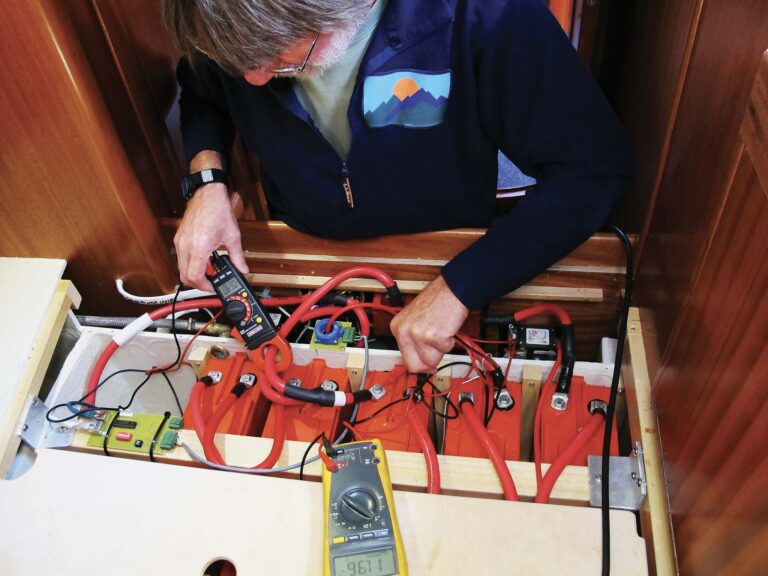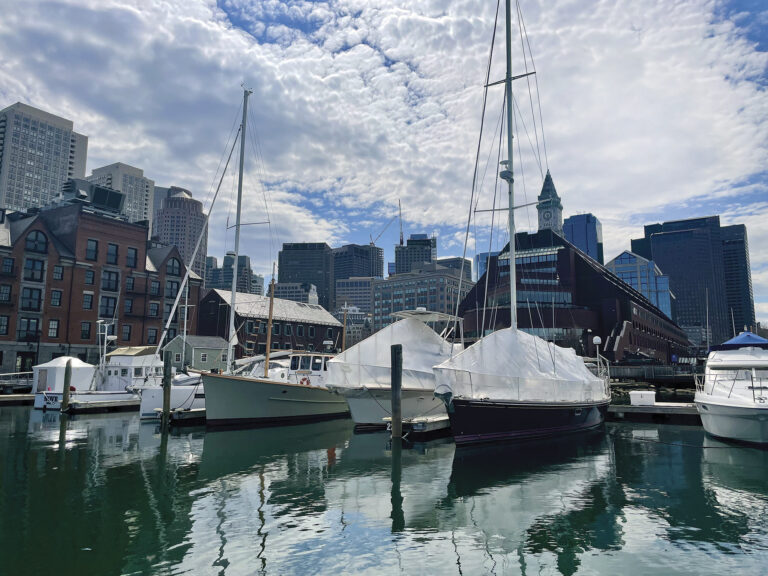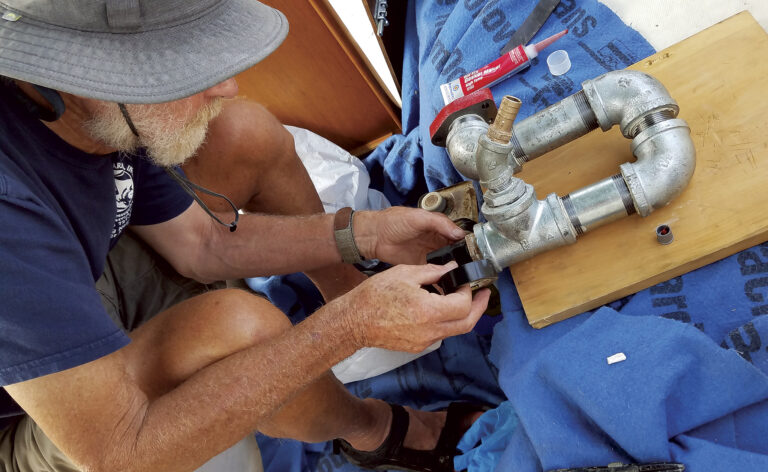
During the extensive refit of my Pearson 40, I needed to create a significant number of custom-sized plywood drawers and stowage bins, or boxes. These included 10 under-floor storage bins, under-sink organizers, boxes for tools and stores, and even a specially fitted cat litterbox. There are many traditional ways to create the joints to build such boxes, but in the interest of quick build times and the desire to make them waterproof and easy to clean, I chose a method that uses a fillet of epoxy paste. The following photos show how to easily create boxes of any size or shape.

Step 1: Cut the four sides and bottom. This is best accomplished with a table saw but can also be done with a circular saw. The joints are simple overlaps without any special joinery, like dovetails or rabbets. Remember that with an overlap joint you need to accommodate the joint thickness when you cut the sides and ends to length.
Step 2: Glue the box together with inexpensive wood glue, and then clamp until the glue sets up. This glue only holds the box together until the next step is completed.
Step 3: A fillet of thickened epoxy paste makes for an extremely strong joint. I use this method on all the interior joints within the box I am building. It takes a little practice to make the fillet smooth and even, but once you learn how to do it, it is very fast. The best tool I’ve found for making these fillets is a standard wooden tongue depressor. You can also cut a plastic spatula/spreader into the desired curve and use it to create the appropriate radius in the epoxy paste. Although standard 90-degree joints create hard corners that can be hard to clean (and can also trap moisture and water) an epoxy-filleted joint is waterproof and creates a nicely filled curved joint that is easy to clean. If the box is going to be used in a particularly abusive environment or needs to be capable of carrying heavy loads, you might want to add some fiberglass tape reinforcement over the fillet.

Step 4: Once the epoxy hardens—usually around 24 hours—it is ready to be sanded and finished, with either paint or varnish. If the box is going to be subjected to significant water exposure, I recommend that the entire box be epoxy-coated, especially the edges. Once this waterproof layer has hardened, it can be sanded and finish applied. As you can see in the photos, if the fillet is properly shaped and the appropriate sanding is done, the book should look great even with clear varnish.
Ed Note: SAIL is sad to report that Chip Lawson, who recently completed an 11-year refit of his Pearson 40, Passion, passed away unexpectedly this past winter. A great guy and a fine sailor, he will be missed by many, including the staff at SAIL.
February 2019

